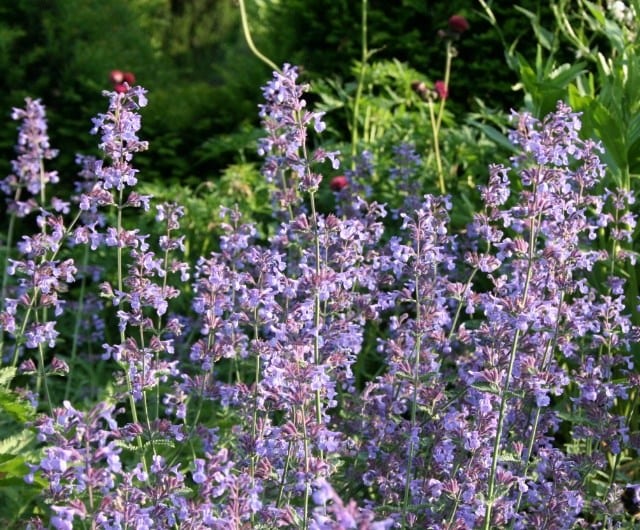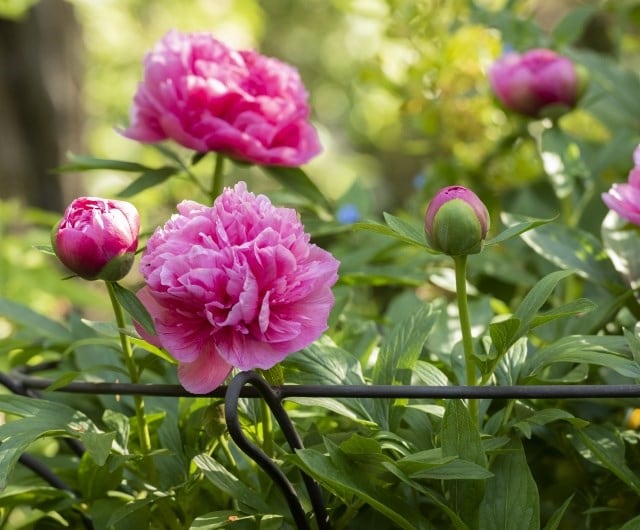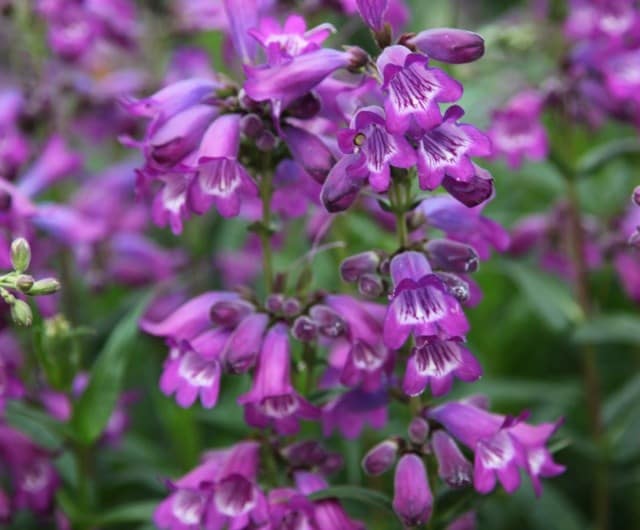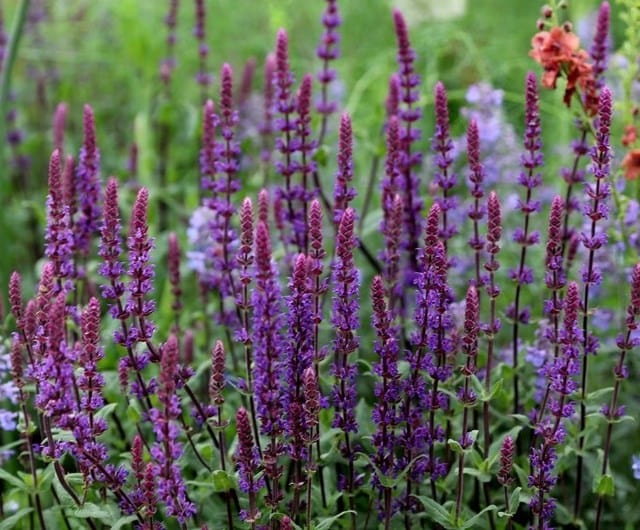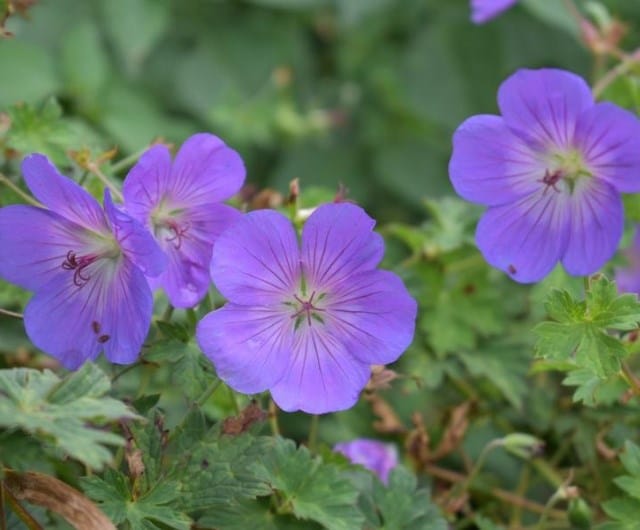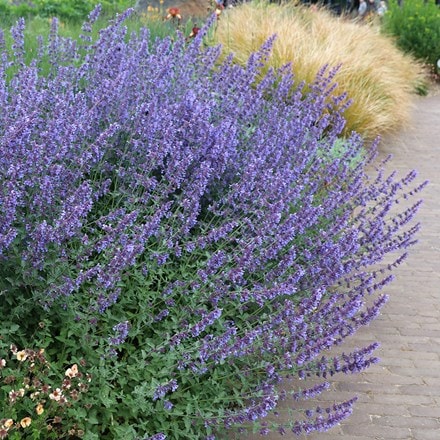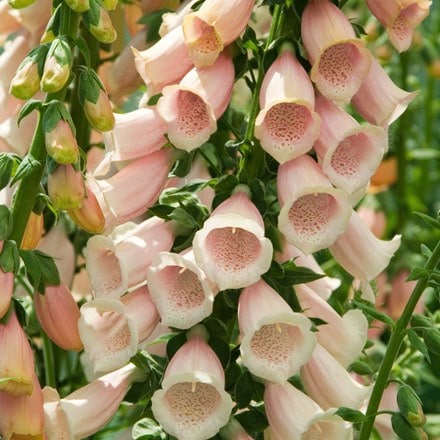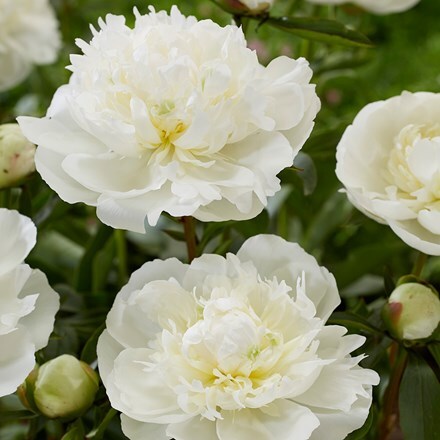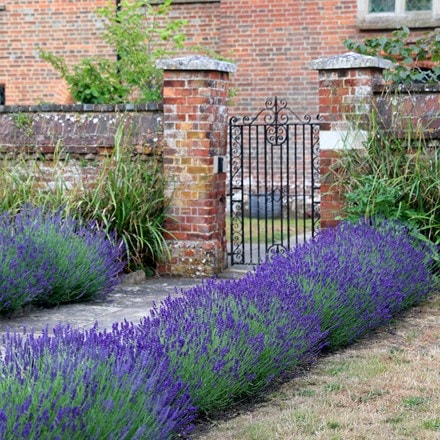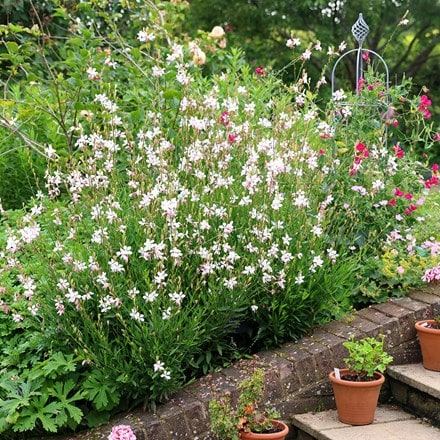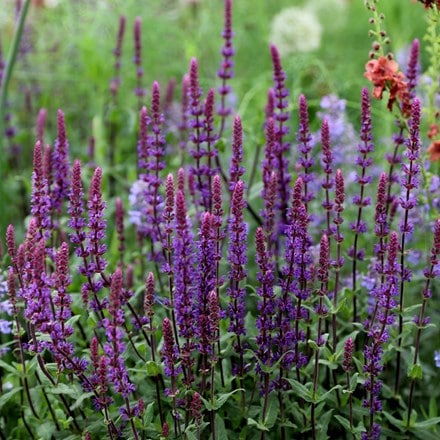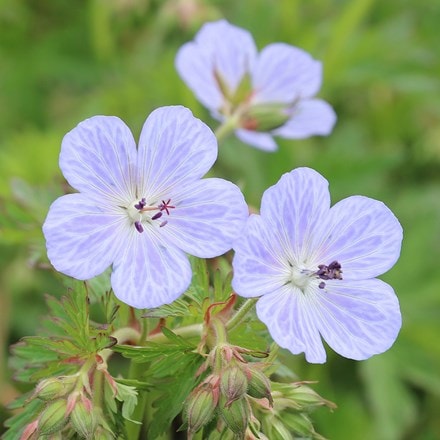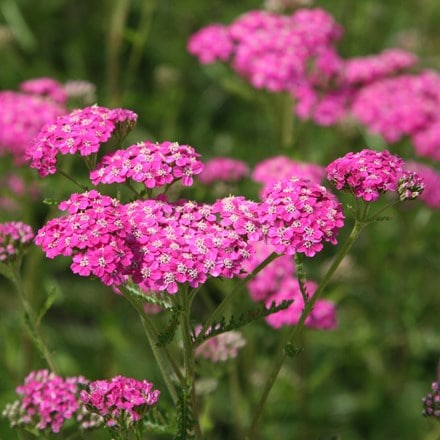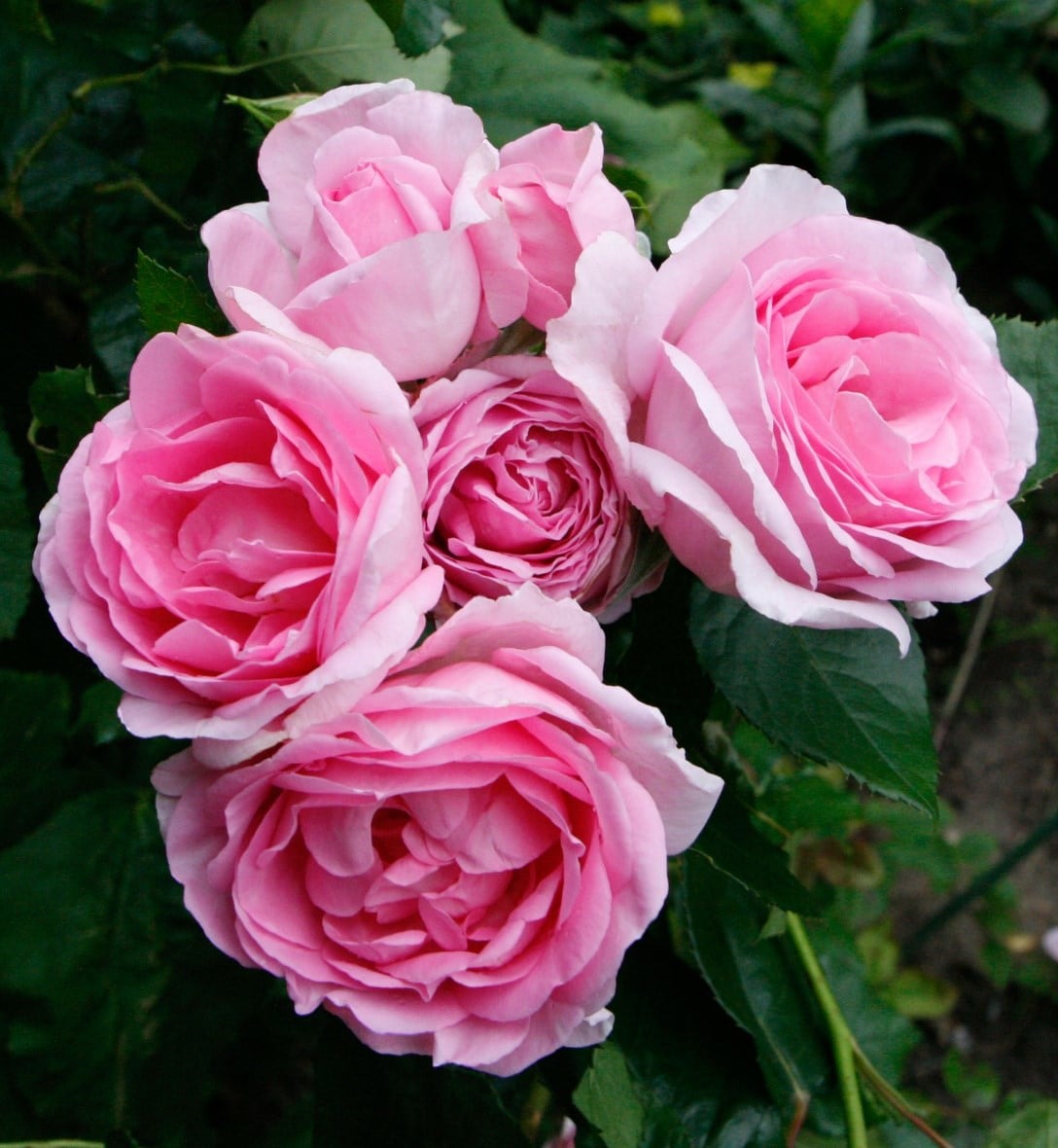Companion plants for roses for the healthiest roses
Have you heard of companion planting? Companion planting uses plant combinations that benefit one another. The benefits range from natural pest control to enhanced pollination and disease reduction.
When choosing plant companions for roses, consider looks, growing conditions, and overall plant health. These companions should complement the roses visually and thrive in similar garden conditions. Additionally, companion planting plays a crucial role in organic gardening. It improves soil health, deters pests, and enhances plant resilience.

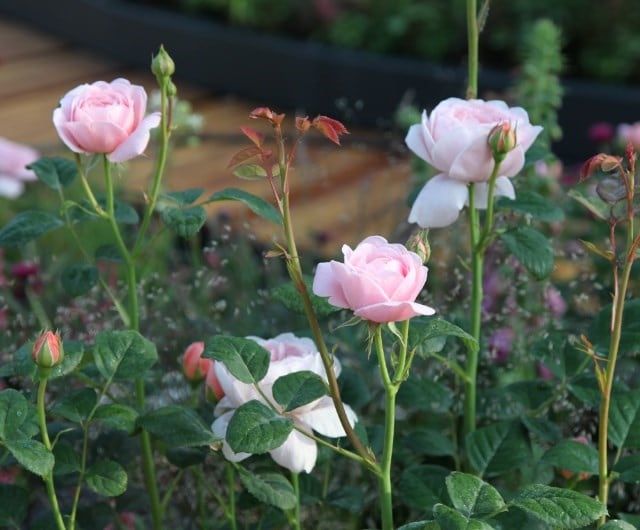
Spring flowering plants for roses
Spring flowers are a great choice for roses, filling your border with colour before your roses appear. They'll keep flowering into the rose season and add great contrast.
Foxgloves
Texture, colour, and form are all important for companion planting. Early flowering roses tend to come in shades of white, pink or purple-pink. A perfect companion is a foxglove.
Foxgloves appear in time for the first roses and carry on after the first rose flush has finished. Their dappled throats are often a mixture of dark magenta or white spots, picking up the colour of many roses. The vertical spires break up the rounder rose bushes helping to relieve any monotony.
Plant foxglove seeds in the autumn or spring, or buy them as garden-ready plants. You could use the non-spotted albiflora, a pure-white foxglove that goes well with darker roses. Or choose the peachy foxglove 'Sutton’s Apricot' paired with cream or blue flowers. They glow in dappled shade.
Verbascums
Smaller verbascums will also provide good vertical companions for roses. The slender purple Verbascum ‘Violetta’ begins to flower in early May. Although it's truly perennial, you can allow this willowy, hardy verbascum to self-seed for filled borders.
Later in the year, another Verbascum ‘Album’, provides slender tapers of white flowers in late summer. Each small flower has feathery purple anthers and orange stamens. So, it avoids looking glacial and flatters perfectly dusky roses.
Nepeta
Blue flowers look great with apricot and yellow roses; make pink roses look stronger and add a sultry note to reds. However, good blue flowers are few and far between.
Use the silver-leaved, non-stop flowering Nepeta ‘Six Hills Giant’ for a soft sea of pale blue. It will sprawl and flow like waves on the sea. Chop it back hard at least twice, and still give you an encore later. It looks sensational under the silver-pink rose ‘New Dawn’.
However, it can smother plants. If space is tight opt for Nepeta racemosa 'Walker's Low', which starts flowering in early spring and is less aggressive.
Peonies
Other May-flowering partners could include types of Paeonia lactiflora. These peonies are different from the usual cottage garden peonies. They bloom for several weeks in June rather than in May.
They have good foliage and similar blooms that flower earlier than roses and overlap with the start of the rose season.
For darker roses, choose P. lactiflora ‘Duchesse de Nemours’, a fragrant vision of cream. For a classic cottage garden try 'Festiva Maxima', a pale flesh-pink flecked lightly with maroon.
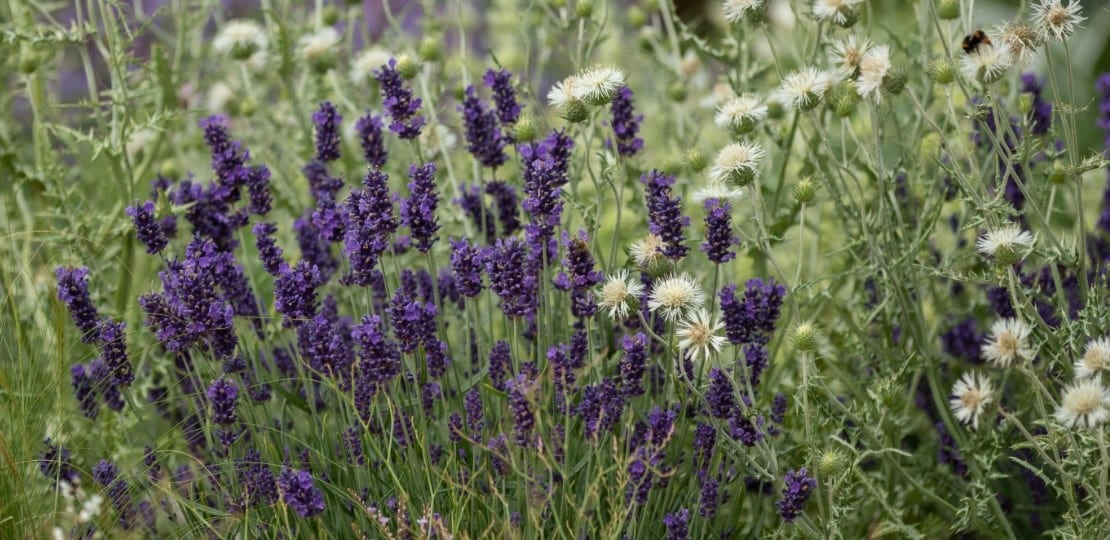
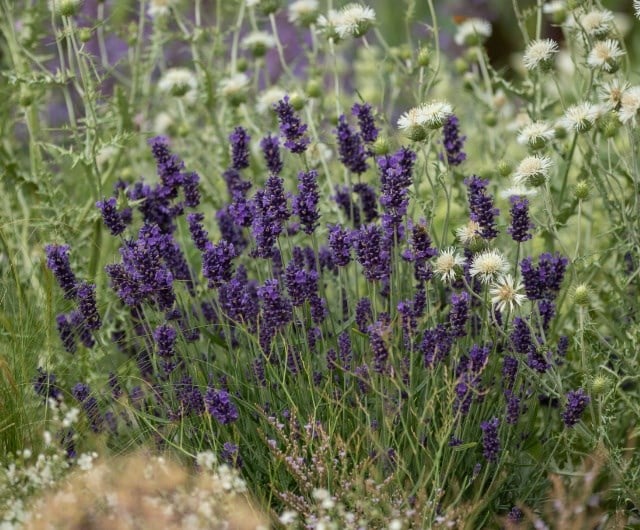
Summer long flowering companions
After your roses flower, great companions are repeat-flowering perennials that flower throughout the summer and into the autumn. They come in a variety of colours and textures and here are some of our favourites.
Lavender
Lavender is a great companion plant for roses. English lavenders are one of the best to plant as they're hardy perennials that will flower year after year.
Once established, chop back by a third in May. This delays the flowers, so they flower in late summer with the roses. Trim back English lavender hard again in August to encourage bushy growth the following year.
The dark purple-blue ‘Hidcote’ and the paler ‘Munstead’ make compact bushes suitable for low hedges. ‘Melissa Lilac’ has fatter flowers and softer silver foliage, perfect for peach and apricot roses.
Penstemons
Keeping the show going in autumn is also important, and penstemons are perfect as long flowering plants. They flower from July up until the first frost. However, they vary greatly.
The best penstemons for roses are the smaller-flowered, most floriferous ones. Our favourite is the old cultivar 'Andenken an Friedrich Hahn'. It throws out spike after spike of narrow-tubed, claret flowers, and it’s one of the hardiest as well.
Gaura
The white forms of Gaura lindheimeri are some of the best late flowers. These dainty, long-flowering perennials are almost the last man standing.
The simple white flowers appear on slender stems, so this is a ballerina of a plant looks fragile but is wiry and strong. It can flower until late November, and that hint of red-pink picks up roses of many colours.
Salvia
Salvia is a great planting companion for roses because of its range of colours and long flowering period. Plus, the sulphur in the salvia’s scent profile means that when they warm up, they release a natural fungicide. Therefore, underplanting with salvia keeps roses mildew—and blackspot-free organically.
For a darker, inkier blue, choose the upright Salvia nemorosa 'Caradonna'. It has upright candles of purple-blue flowers and crinkled green foliage. For a lovely white Salvia, try Salvia × sylvestris 'Schneehügel', a perfect cottage garden companion.
Geraniums
Hardy geraniums also work well with roses. They're long flowering and the perfect in a traditional English garden.
The sterile white and pink flowered 'Elke' is excellent at the front of roses. The late-summer flowering ‘Rozanne’ sprawls to a metre wide, but positioned carefully it is stunning.
The early summer-flowering G. pratense ‘Mrs Kendall Clark’ is a vision of pale lavender petals. However, even though she does come true, deadheading is necessary to prevent unwanted seedlings. Like all geraniums, cut back to nothing if they look shabby, and they will produce fresh green foliage within ten days.

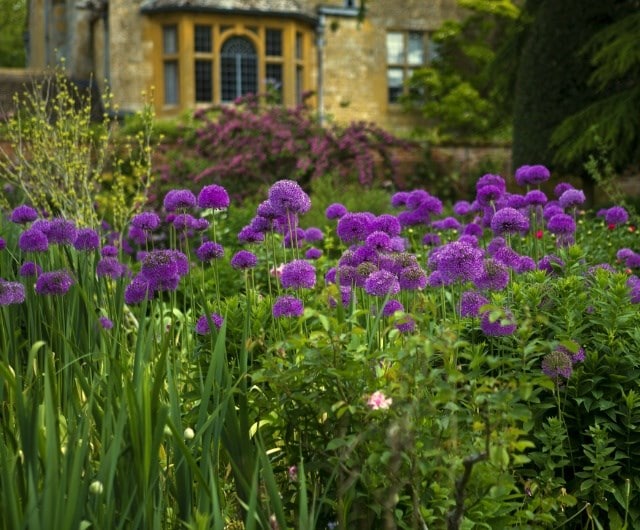
Companion plants for roses to keep pests away
Beneficial pairings between plants help bolster growth and provide protection against pests. Certain rose companion plants contain substances that naturally deter pests. These act as repellents, removing the need for chemicals or pesticides.
Alliums, not only make for wonderful rose companions, but they also help increase the perfume of roses. Plus they ward off aphids that might otherwise cause black spots.
Lavenders repel deer and rabbits with their strong scent. They also protect roses from aphids and encourage pollinators like bees.
Salvias attract pollinators while reducing the need for chemicals. They also produce a natural fungicide that prevents mildew and blackspot.
If you need a drought-tolerant planting companion, try yarrow. They thrive in full sun and attract pollinators like ladybirds to eat aphids. Plus, they won't mind if the roses use all the water.




